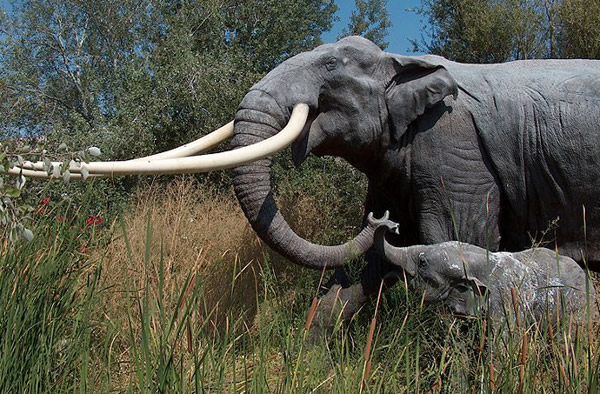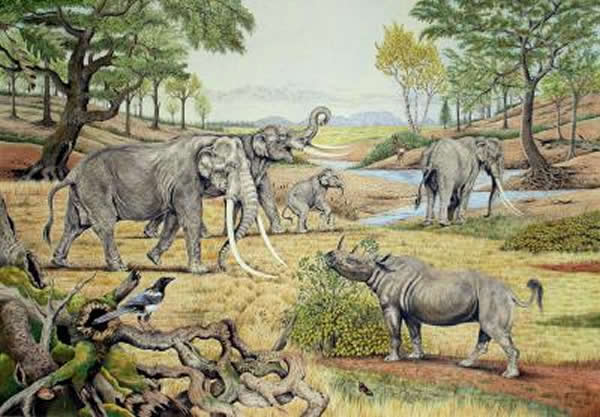Elephants Landscaped Ice Age Europe Into a Park
Extinct long-tusked elephants, rhinos and other giant plant-eaters may have landscaped prehistoric Europe into a mixture of open park-like spaces and clumps of forests, until humans came on the scene, new research finds.
Ecologists recently examined beetle fossils for hints of hungry mega-gardeners’ influence on the environment, along with signs that the ecosystem radically changed when humans expanded into Europe.
During one of the warm periods between Ice Ages, known as an interglacial period, animals and plants recolonized the thawed north. In that ecosystem, elephants and other huge herbivores may have devoured tender saplings, spread grassland seeds into forests and otherwise halted trees’ territorial ambitions.
The resulting landscape held a fertile mosaic of woodlands and grasslands for grazing, suggested ecologists in the most recent Proceedings of the National Academy of Science (PNAS).
Dung beetles gave scientists the dirt on interglacial ecology. Dung beetles prefer to live in open, sunny environments with plenty of poo from plant-eaters. Other types of beetles prefer the deep shade of a heavy forest canopy. By counting the number of dung beetles in the fossil record of Great Britain compared to other beetle species, the ecologists were able to piece together the layout of this ancient landscape.
During the interglacial period from 132,000 to 110,000 years ago, dung beetle fossils abounded, which implied plenty of unshaded, treeless territory. Giant animals likely served as natural landscapers in this ecosystem. During the interglacial period, more than half of the sites examined by the study held beetle species found in mixed woodland and pasture landscape.
After 110,000 years ago, ice conquered Europe once again, then re-thawed approximately 15,000 years ago. However during the warm period from 10,000 to 5,000 years ago, there were few dung beetles, possibly because another species had moved north as the glaciers retreated.
Modern Homo sapiens migrated north as they hunted elephants. That predatory pressure from humans may have stopped the lumbering landscapers from pruning the edges of the forest, suggested the authors of the PNAS study. In this period, called the early Holocene, forest beetle species dominated more than half of the sites.
“Large animals in high numbers were an integral part of nature in prehistoric times. The composition of the beetles in the fossil sites tells us that the proportion and number of the wild large animals declined after the appearance of modern man,” said co-author Jens-Christian Svenning of Aarhus University. As a result of this, the countryside developed into predominantly dense forest that was first cleared when humans began to use the land for agriculture.”
Photo: Extinct straight-tusked elephants (top). Credit: Apotea, Wikimedia Commons. Above, a reconstruction shows a Last Interglacial temperate landscape in Germany, with typical Late Pleistocene European large herbivores such as the straight-tusked elephant, Elephas antiquus, an extinct rhinoceros, Stephanorhinus kirchbergensis, as well as the still common roe deer, Capreolus capreolus. Illustration: Elke Gröning(Mar 4, 2014 01:14 PM ET // by Tim Wall)













